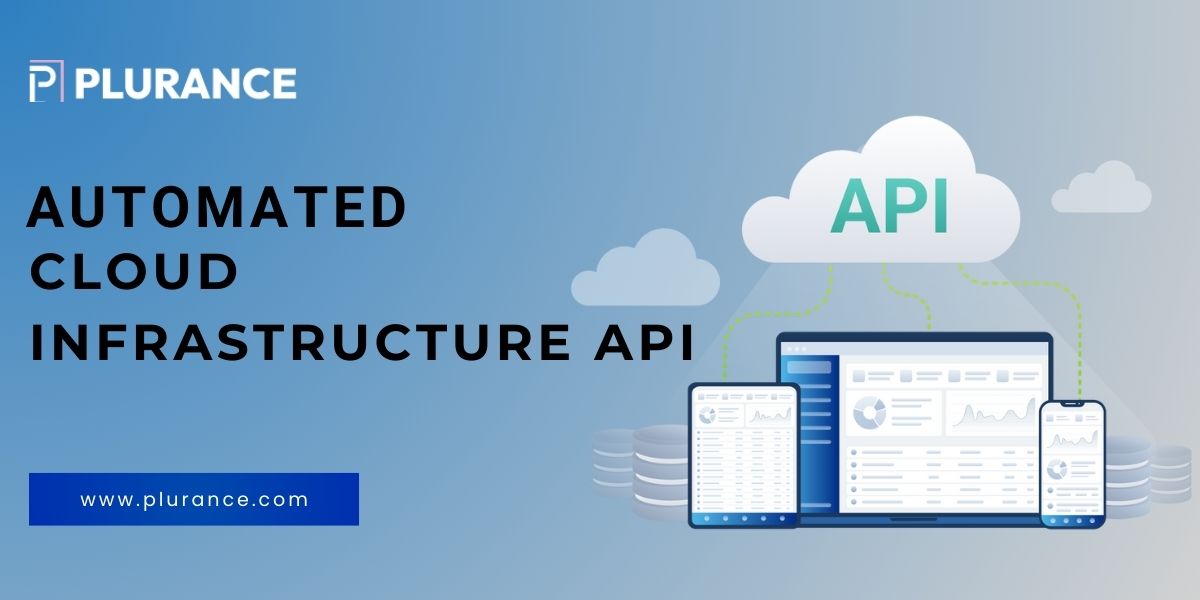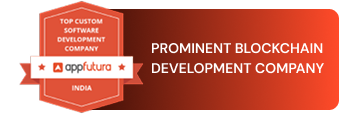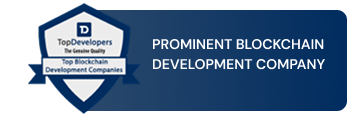Automated Cloud Infrastructure API streamlines the cloud management and related tasks by automating processes, delivering faster, more reliable, and efficient cloud operations.
Cloud technology has become an essential asset that revolutionizes how organizations operate. By leveraging cloud computing, companies can access computing resources whenever in need via the internet, reaping advantages like enhanced flexibility and reduced costs.A vital component of cloud computing is the Application Programming Interfaces (APIs), which enable users to effectively access and manage these resources.
This blog will explore cloud infrastructure APIs in detail, showcasing their benefits, diverse applications, and how they operate. Additionally, we will examine the automation opportunities that these APIs can facilitate within cloud infrastructure.
What actually does Cloud infrastructure APIs mean ?
A cloud API is a technological solution that facilitates the automation of cloud infrastructure. It allows for the exchange of information and communication between resource providers and applications while keeping implementation specifics hidden.
By utilizing cloud infrastructure APIs, development teams can seamlessly incorporate server resources into their workflows. This technology serves as a bridge connecting development teams, applications, and cloud service providers.
The Significance of Cloud APIs for Businesses
Cloud APIs play a crucial role in achieving successful digital transformation. By leveraging cloud APIs, organizations can expedite their time-to-market and secure a competitive edge.
Fostering New Market Opportunities
APIs serve as a catalyst for innovation, allowing businesses to explore and establish new markets and opportunities.
Consider the case of John Deere. The company utilizes APIs to develop intelligent, interconnected products, thereby creating a novel marketplace within the food system.
Enhance Customer Experiences
APIs enable the enhancement of customer experiences while maintaining robust security measures. Cloud APIs facilitate the connection of applications and the exposure of services.
Consider a Fortune 500 company that leverages cloud APIs to safeguard back-end data and ensure security, all while providing accessible services to its customers. This approach leads to increased customer satisfaction and improved overall experiences.
Establish New Collaborations
APIs facilitate the development of partnerships by allowing services to be shared between organizations, thereby accelerating innovation.
Consider a North American Bank that utilizes cloud APIs to forge innovative collaborations with emerging IoT and FinTech firms.
Revitalize Mainframe Applications
APIs assist in modernizing mainframe applications, enabling the utilization of their data within cloud environments.
Create New Partnerships
APIs enable partnerships to flourish. That’s because you can use APIs to make services available to your partners — and vice versa — so you can innovate faster.
Consider the case of this North American Bank. They utilize cloud APIs to forge new and innovative collaborations with disruptive IoT and FinTech firms.
Enhance Mainframe Applications
APIs facilitate the modernization of mainframe applications, allowing you to harness their data in the cloud.
How does Cloud API function ?
A cloud API provides developers with the ability to tap into various services, including storage, networking resources, infrastructure, and audit logs. The architecture of the API is determined by the specific layer at which the cloud API connects with other services.
- Service level (PaaS) APIs seamlessly link infrastructure with storage solutions, data repositories, and business intelligence services, enhancing operational efficiency.
- Application level (SaaS) APIs facilitate the connection of applications, including ERP and TERM-based software, to the underlying infrastructure, ensuring smooth functionality.
- Infrastructure level (IaaS) APIs provide control over cloud resources and networking, while also supporting effective workload management. Additionally, cross-platform APIs ensure compatibility across various vendors, enabling a cohesive experience in multi-cloud environments.
Understanding Cloud Infrastructure Automation
Cloud infrastructure automation employs cutting-edge technology to streamline the establishment, configuration, and administration of cloud resources, enhancing operational efficiency and refining processes. The main goal of this automation is to address the difficulties associated with manual cloud provisioning, which can lead to various complications.
- Adjusting the size, provisioning, and configuring of resources and virtual machines (VMs): Automation plays a crucial role in optimizing resources for their respective workloads, thereby preventing over-provisioning and minimizing expenses.
- Monitoring and evaluating the performance of cloud resources: Automated monitoring solutions continuously assess performance metrics and can swiftly detect and resolve issues before they develop into larger problems.
- Overseeing virtual networks: The use of automation enhances the establishment and oversight of virtual networks, leading to improved connectivity and enhanced security measures.
- Evaluating and launching software: The implementation of automated testing and deployment procedures increases the reliability of software and accelerates the release timelines.
- Provisioning storage: Automating the provisioning of storage resources guarantees data accessibility and scalability, all while upholding data security standards.
Usecases of cloud automation infrastructure
Cloud automation is commonly applied in various scenarios, such as:
Automating the provisioning of infrastructure:Significantly reduces the time required to configure numerous virtual servers. By utilizing an infrastructure-as-code (IaC) tool, you can develop templates that specify and implement the configuration for each server. This methodology is also applicable to other cloud resources, such as networking components and storage volumes. IaC tools are particularly advantageous in cloud environments, as cloud service providers frequently offer tailored solutions for their platforms.
Overseeing workloads—For example, monitoring tools can be set up to assess the performance of a workload. Automated systems can react to notifications and execute scaling or load-balancing measures to enhance performance or optimize resource utilization.
Facilitating DevOps workflows—Agile practices such as DevOps depend on automated tools to swiftly deploy and scale resources while testing software. These tools free up resources for reuse following the testing phase. Major public cloud providers generally provide a range of automation tools.
Effective management: The version control and transparency is achieved through the regular application of cloud automation. This practice establishes a comprehensive audit trail that details the active cloud resources and the modifications being executed.
Cloud optimization -In terms of cloud optimization, automation tools play a crucial role in fine-tuning cloud workloads, ensuring they deliver optimal performance and maximum business value while minimizing costs.
What would you automate with a Cloud infrastructure API?
If you had an API that could help you script up automation around cloud infrastructure that included some of the following things, what would you chain together to automate what you do to make your life easier?
- trigger deployments, monitor usage, horizontally scaling things up/down.
- managing disks, custom domain names, etc.
- subscribe to logging events by service type like just getting database logs.
- monitoring metrics for account usage.
- setting up environment groups/variables.
- managing PostgreSQL databases.
- setting up maximum memory usage for eviction policies, etc.
- setting up workers/crons
How is Cloud Automation Different From On-premises Automation ?
Cloud and on-premises automation exhibit distinct differences in various critical areas such as deployment, cost, and management as IT operations progress.
On-premises
- In the case of on-premises automation, the software is deployed and managed on servers located within the organization’s own data center.
- This method allows for enhanced control over the infrastructure, including direct oversight of security measures and maintenance tasks. The deployment and continuous upkeep of on-premises automation require significant investments in physical infrastructure and personnel for ongoing support, making it a more resource-intensive and expensive option.
Cloud automation
- Cloud automation leverages the Software as a Service (SaaS) model, enabling tools to be hosted in the cloud and accessed via the internet.This approach emphasizes the optimization of services within a virtual environment and is generally simpler to implement and operate.
- The cloud service provider takes care of the investment in resources necessary for ensuring security, scalability, performance, and availability. Consequently, the primary expense incurred is the licensing fee for software access, rendering cloud automation typically more economical than traditional on-premises automation solutions.
- Businesses that opt for cloud automation experience reduced initial investments and ongoing operational costs. They eliminate the necessity of acquiring and maintaining physical hardware or hiring a larger workforce. This enables organizations to concentrate on their primary business while cloud service providers manage the infrastructure.
Hire API developers With Plurance
If you are seeking assistance in sourcing and hiring top-tier API developers to enhance their business operations, Plurance is your ideal solution. We boast a vast network of exceptionally skilled and thoroughly vetted developers who are prepared to integrate into your expanding team. Our platform is designed to connect you with the best talent tailored to your specific requirements while simplifying the hiring process. After selecting your preferred developer from a curated shortlist, we will manage all the essential onboarding tasks, including payroll, benefits administration, tax compliance, and local regulations, allowing you to concentrate on growing your business.




















 IND
IND














